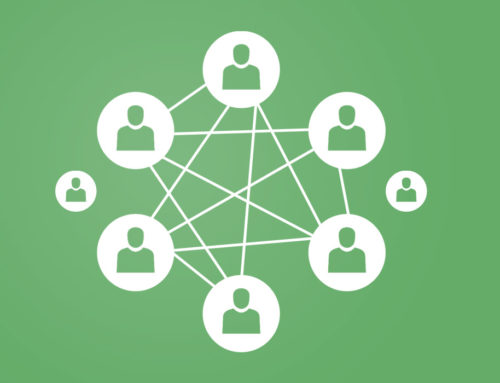Models
Through the use of abstraction, models help us to grasp the whole of a system that would be otherwise impossible to experience through our senses alone
A model is an abstract, typically compact, representation of some phenomena that enables us to conceptualize and communicate its basic structure and dynamics in a coherent form. A central characteristic of models and modeling of all kind is the use of abstraction. Whereby various levels of detail are removed from the original empirical phenomena in order to create a compact schema or diagram of the system under consideration. Models help us organize and structure information, clarify our reasoning, communicate, solve problems and predict events.
Abstraction
All models are simplified representations of reality.1 Models require the compression of information or data to generate a simplified form. This simplification process is essential for grasping the whole of a system. Most systems in the real world are too complex for us to grasp as a whole due to their many diverse components and interactions. In practice, we can typically only interact with and experience a small subset of a system. Abstraction helps us to synthesize our many experiences of some entity into a coherent impression of the whole. For example, one may have a model as to what a nation like Brazil is like, but one could only ever in reality interact with a very limited subset of the whole organization. Thus, it is the model that actually enables us to, in some way, grasp the whole system, but only ever through the use of abstraction that creates a simplified representation of the actual real world phenomena.
Assumptions
The process of modeling through abstraction invariably requires that one makes certain assumptions and often approximations. For example, in their models, Newton assumed that mass is a universal constant, whereas Einstein considered mass as being variable. A model only ever represents some subset of all possible phenomena and thus has to make certain assumptions about other elements and systems outside of our focus of interest. Effective models make explicit the assumptions that they entail, the conditions under which those assumptions will not hold and will be prepared to relinquish the validity of the model under those applications. For example, many of the models that management use in order to deliver their strategy or take a product to market are only applicable under relatively normal market conditions. Management strategy is typically only expected to account for events that are less than a few standard deviations from the norm. However, extreme events do happen and in such circumstances the management team would have to relinquish their model and re-calibrate their strategy. Being aware of the assumptions that support a model is greatly advantageous, as it enables the user to know when to apply it and when not, and it equally offers the possibility of switching to other frameworks when required.
Formal Models
Formal mathematical models describe a system in terms of variables, parameters and functions
Models come in varying degrees of formality, where formality means the degree of definition to the rules of the language being used to do the modeling. Formal systems and formal languages—like mathematics—have a well-defined syntax and alphabet that specifies strict rules about how to encode something in that language, what strings can be created and how they can be manipulated. With mathematical modeling, one is trying to encode the phenomenon of interest into the formal language of mathematics; equation-based mathematical models describe the relations between the different parameters within a system. This formal language can then be used to manipulate the information according to the set of rules to derive a new, previously unknown state to the system. We can then perform model validation, meaning we take this new state that has been predicted by the model and see if it corresponds to empirical observation in order to validate or invalidate the model. If the model is invalided by the data we have to then refine the model—or possibly change it all together—by looking at the original assumptions made, the process of encoding, the logical used to manipulate that information etc. in order to find errors.2
Conceptual Models
Conceptual modeling is the activity of describing some aspects of the physical or social world around us in ideas often encoded in some form of natural language for the purposes of understanding and communication.3 Conceptual modeling may use a domain specific language or lexicon relating to a given areas, such as a group of engineers reasoning about some construct will use specific words. However, a conceptual model may simply be repressed in a natural language whose rules are less well defined and more subjective and open to interpretation.
Conceptual models that can be expressed in natural language are used in many areas to structure our reasoning about issues of interest
The formality of the method used will often correspond to the complexity of the system one is attempting to model, many relatively simple phenomena like the motions of a single pendulum can be easily modeled formally. However, few complex systems, like a society, can be in any way effectively modeled using formal methods—as of yet—and it is often the case that we move from a more generalized informal conceptual understanding of a system to a more formal model.
Effectiveness
The effectiveness of a model may be defined along a number of different parameters. For example, how solid are its foundations? That is to say, the assumptions that it is based upon, are they truly self-evident solid assumptions or are they contingent upon certain conditions that may not always hold? How well does the model allow us to grasp the whole and identify its core attributes? Does it manage to synthesize all of the different perspectives on it? How faithful is it to the empirical phenomena? Does it stand up to empirical testing? Moreover, can it predict future events?
Relevance
Models are often evaluated first and foremost by their consistency to empirical data; any model inconsistent with reproducible observations must be modified or rejected.4 A model should have the capacity to explain past observations and predict future observations to some extent. For example, one perceived limitation in our standard economic and financial models is that they seem incapable of predicting financial crises, even though they work to a certain degree during “normal” economic conditions.
The capacity to predict future events may not even be theoretically possible though in some instances. For example, chaos theory—a well-established model or theory for the dynamics of nonlinear systems—may not be able to tell us much about the future trajectory of a nonlinear dynamical system due to the inherent unpredictability of nonlinear systems. However, any model to a system whose behavior is seen to be deterministic should be able to predict future events to some extent.
Perspective
To be effective, a model must capture diverse information, perspective and view on a particular phenomenon. For example, if we take some complex entity like a city, there will be multiple perspectives on how to interpret it, social, technological, economic, demographic, etc. An effective model must be able to integrate all of these diverse perspectives in some way, to give us a vision of the whole system and a basic understanding of its primary constituent parts and relations. As such, on the one hand, an effective model is a balancing act between simplicity, through abstraction and synthesis, and on the other hand, breadth or scope in order to include all of the different views and possible instances of the system.
Model Scope
The scope that a model covers is an important metric in its evaluation. Models like that of general relativity are highly valued due to their relevance to any physical system from the molecular to the universal level
To be effective a model should contain within it and extend to all instances and applications of the system it is trying to represent. Although models, almost by definition, must be compact representations, they must also be inclusive, entailing within its core form the capacity to derive any possible instance of—or state to—the phenomenon under their description.
For example, Newtonian mechanics once considered a complete model for the interaction between physical systems, is now seen to be limited in scope. Where it may often present a valid description to the mechanics of matter in motion, its application is now known to be restricted to a subset of instances being not capable of describing physical phenomena at extreme states of speed, mass, energy, etc.
The more all-encompassing model of general relativity is thus said to be the corrected “true” or valid model of how physical systems operated due to its more general application under many more circumstance, though it may still be seen to be incomplete due to its incapacity to describe the subatomic world. The fact that many engineers still use Classical mechanics helps to illustrate that most models of sufficient complexity are invariably not “right” or “wrong”, but can be better understood with respect to the varying degree to which they achieve both scope, simplicity, and relevance.
Development
One of the great achievements of the human creativity has been to develop abstract representations of the world around us. This had much of its origins with the development of language some 100-200 thousand years ago as a way to communicate complex conceptual models. Later it gave rise to the development of signs and symbols marked on a medium, cave paintings, the beginning of written language and mathematics. Humans have since that time evolved highly sophisticated ways to use those signs and symbols to construct models of the external environment. Formal models have extended the human ability to much better understand the world, communicate that understanding between each other and to collaborate around those shared models. Today we have computational models of highly complex phenomena, such as the weather, that allow us to make more detailed predictions about the future than could be done with just mental models.
Limitation
Models are powerful tools in that they enable us to conceptualize large systems that are beyond our immediate faculties, but they do this by removing certain details. If the model is not built properly, that is to say, all relevant information is not represented in the model in a compact form, they represent only a partial account as to how the world is. When we then use those models to operate in the world, the results may be, at best, only partially successful and, at worst, a potentially dangerous situation. Models constrain our perception, they contextualize, frame and condition what we see and don’t see. Models that are poorly built and do not include all relevant perspective and information can blind us to what would otherwise be obvious information. In a very literal manner, models remove one from one’s senses in that they are conceptually based if they are not adequately built they can create non-sensical results.
One good example of this would be models used in economics that try to describe human actors as rational agents. These models are constructed in a particular way so as to be able to model human economic activity mathematically. In the everyday world, it is quite apparent that people do not always consider all actions in a rational fashion we take many shortcuts, have personal bias, copy others, use heuristics, etc. none of which are rational. But none of this can be captured using formal mathematical models and thus it is excluded from standard economic theory. Of course, the world does not change simply because it does not fit into our modeling frameworks. Whenever there is a mismatch between a model and the empirical world it is ultimately the models that have to give and breaks down. We may go on using limited models because that is all we have, but there will clearly be consequences. Thus, it is always desirable that we be explicit about the limitations of a model and work towards developing more robust models whose foundations are more robust, scope broader or match more accurately empirical data.




